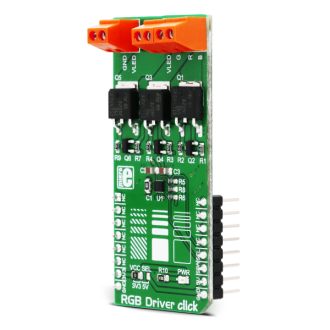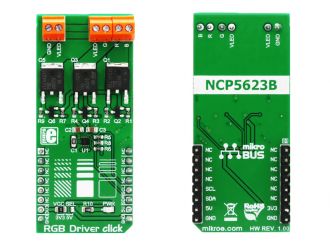
We strongly encourage users to use Package manager for sharing their code on Libstock website, because it boosts your efficiency and leaves the end user with no room for error. [more info]

Rating:
Author: MIKROE
Last Updated: 2018-07-12
Package Version: 1.0.0.0
mikroSDK Library: 1.0.0.0
Category: LED segment
Downloaded: 4886 times
Not followed.
License: MIT license
RGB Driver click is an RGB LED driver, capable of driving RGB LEDs with the reasonably high amount of current, via the I2C interface.
Do you want to subscribe in order to receive notifications regarding "RGB Driver click" changes.
Do you want to unsubscribe in order to stop receiving notifications regarding "RGB Driver click" changes.
Do you want to report abuse regarding "RGB Driver click".


Library Description
Library carries all necessary functions for complete control over RGB Driver click.
Key functions :
void rgbdriver_setColor(uint32_t color) - Set some of the predefined colors provided as constants
void rgbdriver_setRGB_Color(uint8_t red, uint8_t green, uint8_t blue) - Set raw RGB value
Example description
The application is composed of three sections:
void applicationTask()
{
rgbdriver_setColor(_RGBDRIVER_COLOR_RED);
Delay_1sec();
rgbdriver_setColor(_RGBDRIVER_COLOR_YELLOW);
Delay_1sec();
rgbdriver_setColor(_RGBDRIVER_COLOR_BLUE);
Delay_1sec();
rgbdriver_setRGB_Color(0x40, 0x9F, 0x60);
Delay_1sec();
}
mikroE Libraries used in the example:
Additional notes and information
Depending on the development board you are using, you may need USB UART click, USB UART 2 click or RS232 click to connect to your PC, for development systems with no UART to USB interface available on the board. The terminal available in all MikroElektronika compilers, or any other terminal application of your choice, can be used to read the message.